Before we get started, if you’re viewing this in your email, click on “read full article” when it prompts you to do so, as this has a bit more info than emails allow you to read.
As a reminder, this article is part of the new section, The Art & Practice of Shamanism. You can update your notifications of new posts to this section here.
What Is Shamanism?
Oh, shamanism. You are such a complex word, with so many people defining you in such diverse and interesting ways. Where is a seeker to begin?
Norse shamanism, Celtic shamanism, core shamanism, Mayan shamanism…is everything shamanism?
Kind of ;)
When I use the term “shamanism” I’m referring to something that is a spiritual practice, a healing art form, and a way of being in the world. I’m not referring to any specific practices from specific cultures.
I believe it is vital that we reclaim the practices and wisdom of shamanic paths in order to survive the challenging times we live in.
Shamanism is a spiritual practice and healing pathway that recognizes the inspirited essence of all beings, from humans and animals to mountains and the cosmos. It is the path of direct revelation, of cultivating your own innate and unfiltered connection to the divine.
The larger field of shamanism is complex enough that we’ll probably never have total consensus on what this word means. Still, as a teacher of shamanism, I know that it’s worthwhile to have a basic understanding of this loaded word.
So let’s do it. Let’s look at what shamanism is, the core practices of shamanism, the tools, perspectives, healings, beliefs, and more. Here we go…
The Origins of the Word “Shamanism”
The word shamanism originates from the Tungus language spoken by certain indigenous people of Siberia. In that language, the term "šamán" refers to a man who can access altered states of consciousness in order to interact with the spirit world — and in many ways this is still what shamanism refers to today.
But this history is worth taking another look at…
In the early 19th century, Western anthropologists were studying these Siberian people — the Evenki people — and they used that word, “shaman”, as a descriptor for all their spiritual practices.
Then, the field of anthropology started applying this word to pretty much any indigenous culture’s healing and spiritual practices — and its use just grew from there.
As an aside, while the Tungus word shaman was used for men, the word udagan referred to women who could travel the spirit world. Even though these women healers were just as respected as the men, and there’s evidence that many of their practices might have even predated the male ones, the anthropologists brought their patriarchal biases with them and everyone became a shaman. So, even today, we’re still using the term shaman instead of udagan.
And, while we’re on the topic of language and shamanism — there are a few more important notes I want to make…
First, it's really important to recognize that not all indigenous cultures today identify with the term “shamanism”.
Every culture has its own linguistic and spiritual traditions, and these do not conform to anthropological terminology.
Second, it’s generally thought that calling yourself a shaman is a bit gauche at best or offensive at worst.
This is in part because the idea is that spirit and your community decide you’re a shaman — you don’t make this call yourself.
And it’s in part to distinguish the depth of trials, experiences, connections, and service that true shamans have from those who simply live a shamanic lifestyle or work with shamanic practices. This is why you’ll find most healers in the shamanic arts identify with the term “shamanic practitioner” rather than the term “shaman”.
Now, whether you like these linguistic origins or not, the term “shamanism” has become the most quickly recognizable word for a certain set of spiritual practices that nearly all cultures have shared at some point in their history.
I’ve actually coined the word mythoanimism in order to move away from some of the inaccurate uses of the word shamanism, as well as to incorporate much of the spirituality I’m drawn to outside of shamanic traditions. But since no one outside of this little community has heard of my made up word, I still use “shamanism” too.
The Elements of Shamanism
Even though shamanism refers to a very diverse set of beliefs and practices, there are a few elements that remain consistent markers…
First, and most foundational, is the recognition that there is more to reality than our physical existence.
In a way, this ancient understanding is not unlike our modern quantum one. We know that there are energetic and spiritual dimensions of reality that influence us just as much as the physical reality we live in.
We can see some of these energetic dimensions by looking at our own energy body: the meridians, chakras, and auras that layer upon each other to make us who we are. We can see more of the spiritual dimensions by tuning into our souls, that part of us that remains whole, loving, and eternally connected to the divine.
All these layers of reality influence each other. So taking care of your physical body will impact your energetic health, and taking care of your energy body will impact your physical wellbeing.
Likewise, partnering with the spirit world, perhaps through ritual, magical practices, or even visualization and prayer, can enhance your ability to manifest your intentions and open new opportunities in this dimension.
Everything is connected.
The second element all shamanic cultures have in common is an animist worldview.
Animism is the belief that all beings and things are inspirited, or animated. This includes those beings we can see — such as animals and plants, as well as rivers, mountains, stones, microbes, and stars. And it includes those beings we can’t see — at least in this dimension — such as angels, fairies, deities, and ancestors.
But animism goes even further than this. Places are also viewed as inspirited — so you could connect with the spirit of your home or even your city. And human-made objects are inspirited — if you’ve ever talked to your car or computer, you have an innate sense of this truth.
Even ideas and concepts are seen as having a spirit in animist traditions. So money, for example, has a unique spirit that you can connect with. As would the concept of democracy, or the emotion of hope.
I refer to the animated energy of concepts as a field. Remember when I mentioned that the field of shamanism is complex? That’s because even shamanism itself has a living, animated spirit!
The third element is being in active relationship with spirit guides.
Spirit guides, helping spirits, spiritual beings…whatever you call them, you are in relationship with them. These might include ancestors, power animals, deities, angels, starbeings, nature spirits, and many more benevolent beings (some we might not even have names for!).
This is directly connected to the animist world view: We are not alone in our inspirited nature, and we don’t pretend to be.
The word relationship is key here. This isn’t the type of situation where you contact spirit beings just when it’s convenient or when you need something. Instead, you relate to them as kin. You get to know the spirit beings in your life, check in, and practice reciprocity — giving and receiving in an active relationship with them.
These helping spirits provide us with immense guidance, healing, insights, and so much love.
The fourth element is living in harmony with the natural world.
In all ancient cultures, the Earth was seen as alive and as an essential part of our more-than-human family. She was our great mother (and our fertile father in some ancient traditions), who ensured the survival and well-being of all her children. We were born of the Earth, nourished by the Earth, sheltered by the Earth, and loved by the Earth. And we remained in reverent relationship with her throughout our lives.
This reverence extends to all of the inhabitants of the Earth — plants, stones, animals, the elements, the spirits of nature…even other humans. (gasp!)
What’s more, it’s not just that we love the natural world — we partner with the natural world. The spirits of nature are seen as just as conscious as we are, with just as much agency.
We all share this Earth together, so humans don’t make decisions alone — we commune with the spirits of nature, listen to their guidance, and act in the best interest of all.
This piece is one element that can really distinguish shamanism from other new thought spiritual traditions. You can talk to spirits all day long, but if you’re not actively partnering with the natural world as a regular part of your practice, I’m not sure I would call that shamanic.
The fifth element is being of service.
In shamanic cultures, the shaman always served the community, which as I’ve just mentioned, includes our more-than-human kin. Shamanism was never just about personal development and self healing. And this is true today.
Yes, you will find profound personal healing on this path, but if you really commit to the shamanic arts, you will be asked to serve something greater than yourself.
This will of course look different for everyone, as we all come here with unique gifts and potential opportunities in our lives. You might be drawn to see clients and offer shamanic services. Or you might work quietly and alone in service of the Earth. Maybe you’re simply a healing presence for those closest to you. Or perhaps you channel spiritual wisdom into creations that support our collective. How you serve matters much less than the fact that you do serve.
The sixth and final element is that of using altered states of consciousness to navigate the spirit realms.
This is another key piece that really sets shamanism apart from other types of spiritual practice. With shamanism, you’re not just meditating, and you’re not just talking to spirits and trees and such throughout your daily life.
You are literally entering into alternate dimensions of reality and traveling throughout them.
This is called — you guessed it — the shamanic journey.
Direct Revelation & The Shamanic Journey
The central theme of all shamanic practice is the art of direct revelation.
Direct revelation means that you contact the spirit world directly — no intermediaries in the form of gurus, priests, or even other shamans are needed.
And the shamanic journey is the practice most commonly used to communicate directly with the spirit world.
Shamanic journeying involves entering an altered state of consciousness to connect with spiritual realms for guidance and healing.
In many ways, we can think of shamanic journeying as a type of meditation — but there are some aspects that set it apart:
First is the intention — you’ll generally enter into a shamanic journey with the purpose of transcending ordinary reality and communicating directly with the spirit world.
And second is the idea that your consciousness is actually traveling through alternate realms. In Western core shamanism, these realms are often referred to as “non-ordinary reality”, and our regular, daily lives as “ordinary reality". In Celtic traditions, we might say “the otherworld”. The language matters less than the distinction.
While some shamanic journeys are embodied, where you do stay in your body and meet with spirits or receive healing in the here and now, this ability to send your awareness into different dimensions and realms of the spirit world is an essential part of the journey practice.
A Shamanic State of Consciousness
A key piece of the shamanic journey is altering your consciousness.
Some shamanic cultures rely heavily on mind-altering substances (such as the Evenki of Siberia or many South American groups), some rely more on sound (such as völvas of Nordic traditions), and still others rely on extreme conditions (such as a sweat lodge).
Each approach has its own benefits and drawbacks, and it’s worth exploring what feels right for you. With so many ways to shift your brainwaves and prepare for journeying, there is absolutely no need to use any special ceremonies or materials from other cultures that you do not have permission to use.
Benefits of the Shamanic Journey
So, now that you have a better idea of what shamanic journeying is, let’s talk about some of its benefits — in other words, why is this such an important practice?
Shamanic journeying brings us into direct contact with spiritual healing, guidance, and wisdom. It helps us access more than the physical dimensions of reality, which builds personal power that transcends all levels of reality. It’s also a great way to cultivate intuition and self trust.
I believe it is vital that we reclaim the practices and wisdom of many shamanic pathways and practices in order to survive the challenging times we live in — and the shamanic journey is the perfect entry point.
Shamanism helps us cultivate a strong relationship with helping spirits and the Earth, access our own inner wisdom, and commune directly with spirit…For anyone who values spiritual sovereignty, shamanism is a true gift.
Here are the top benefits of having a shamanic journey practice.
Shamanic Cosmology
You should now have an idea of what shamanism is, what a journey is, and why you might take one.
Now it’s time to go deeper into the structure of the spirit realms from shamanic perspectives — in other words, what is shamanic cosmology?
The most foundational concept to understand is that there is more to reality than our physical, 3D world.
While every shamanic culture and cosmology is different, most seem to have a basic framework that looks something like this:
We live in a physical world — you know what this is ;)
There are many energetic dimensions that we don’t usually experience with our physical senses — these dimensions include everything from the energetic foundations that include our chakras and meridians, to alternate realms where fairies and bigfoot might live.
There are purely divine realms — these are where only love exists, we tap into oneness, and meet pure benevolent beings.
Even though this basic framework has three parts, it’s not to be confused with the “three world model” of shamanism. This model primarily comes from the core shamanic work of the Foundation for Shamanic Studies and organizes non-ordinary reality into upper, middle, and lower worlds:
The Lower World usually appears a lot like our regular world does — but with even more beauty and awe-inspiring landscapes or features. It’s a divine realm filled with only benevolent beings and healing energy — there is nothing to worry about or protect yourself from in the lower world.
The Upper World is a lot like the lower world, though it often appears more etheric, angelic, or celestial. Like the lower world, the Upper World is only home to helpful beings and energies.
The Middle World is the realm of our everyday reality — it’s where we live here and now. But, by traveling the Middle World with an altered consciousness, we can explore more of its dimensions.
One of the reasons the three-world model became so popular in Western core shamanism is that it’s said to reflect the similarities of shamanic and indigenous cultures throughout the world…but this isn’t really accurate. My guess is that many of the early anthropologists who popularized the three world model were actually being subconsciously influenced by their own Christian cultures here. You can learn more about this framework and some alternatives in this article.
Shamanic Spirit Guides
One of the main reasons you would take a shamanic journey is to communicate with the spirit world and all the myriad beings who reside there.
Some of these spirit beings are neutral, some are malefic, and some are helpful. Just like there are all types of people in the world, there are all types of spirits in the otherworlds.
Spirit beings who are close to you, who you have a relationship with, are considered to be part of your spirit team. These types of spirits go by many different names — some of the more common ones you’ll hear are helping spirits and spirit guides.
There are infinite types of spirits who will be your helpers or who you might meet in the spirit realms — entire encyclopedias have been written on this! For now though, here are a few broad categories to get you started:
Angels — including our own guardian angels
Deities — gods, goddesses, and ascended masters
Planetary gods — including the Sun, Moon, and Earth
Spirits of nature — including those we can see, like trees and rivers, and those we can’t, like spirits of the land and fae
“Mythical” beings who actually live in other realms — dragons, unicorns, and more
Starbeings from other planetary systems
Ancestors — our own and collective wisdom keepers
Spirits of place — our homes, the land, cities, and more
The elements
Your own higher self
Deceased loved ones
And so many more!
Initiations
If you’re called not just to the shamanic path, but to serve as a shaman (even if you don’t call yourself one publicly), you will encounter initiatory experiences along your journey.
The most well-known are near death experiences (NDEs). You will encounter this type of story in the history of the most authentic medicine people and shamans throughout the world. One of my teachers, Sandra Ingerman, has been struck by lightning and experienced more than one NDE. Another good friend who quietly slips shamanic healing into her Internal Family Systems practice had a profound NDE from a rock climbing fall.
In modern times, I’ve found that experiencing multiple dark nights of the soul is often part of a shaman’s formation. Facing the dark, experiencing the death of faith, again and again teaches you how to navigate the shadows and return to the light. (This has certainly been my path.)
Other initiations can be more intentional. Vision quests, challenges, and intensive ceremonies are found throughout the world.
What seems to be a constant thread throughout all initiations is the theme of dismemberment. What you believe to be true about yourself and who you are is knocked down. Then, through the work of re-membering your truth, the mantle of the shaman may be received.
Shamanic Healing
Shamanism is not purely a spiritual path — it’s a healing one. If you’re connecting with nature and talking to spirits that’s all well and good…but in order for your practice to be considered shamanic, it needs to have a healing focus.
So what does “healing” mean in this context?
When shamanic practices originated in early peoples throughout the world, the concepts of “healing” and “spirituality” weren’t really separated like they are today. With shamanism, we reweave these elements back into coherence.
Shamanic healing refers to cultivating wellness on every level of our beings — spiritually, energetically, mentally, and physically. As a holistic practice, it also sees these areas as intimately connected: When we heal spiritually, we find physical results. When we heal mentally, our energetic body responds.
Yet healing in this case does not refer only to what we would think of as “health”. Healing is restoring wellness, personal power, joy, and agency throughout our lives. Healing is the ability to tend all of your life circumstances in order to self actualize, to live the life your soul came here to live.
Healing can happen on the level of the personal, or interpersonal if you are serving as a healer. It can happen on community and collective levels. And it can happen in service of the Earth, future generations, and even the cosmos as a whole.
The important part is that moving ever closer towards true wellness, towards seeing the spiritual light in all things, is part of your shamanic practice.
Psst: I have a free hour-long class on this topic that you access right here:
What causes illness from shamanic perspectives?
If healing is such an integral part of shamanic practice, what causes illness in the first place?
In line with shamanism’s broad definition of healing, illness also has a more expansive meaning. Illness can be thought of as any sort of imbalance — so everything from being literally sick or injured, to experiencing a series of unfulfilling relationships, to not feeling connected with a sense of purpose can be considered shamanic illness.
On a fundamental level, illness comes down to two things: either something is present that shouldn’t be there, or something is missing that should be there.
What could be missing? In shamanic thought, this would be your personal power or soul essence. I also believe that missing our natural, intimate relationship with the natural world is a part of this.
What could be there? Foreign energies or entities, thoughtforms, curses, entanglements, and cords to name a few things. I would also put twists or obtrusions in your energy body into this category.
Here’s a helpful guide to five main types of shamanic illness…and how we heal them.
Techniques for Healing
I’m sorry to disappoint…there is no way I could cover the range of healing methods offered by different shamanic cultures throughout the world here. Spirit is endlessly creative, and given that shamanic healing happens in partnership with spirit, there are literally infinite healing methods that can be used for healing.
In my own healing sessions with clients, I’m constantly given new techniques I’ve never used before, so that each person receives the perfect healing for their unique needs.
But…there are a few practices that have become pretty popular among practitioners in the modern Western world, including:
Power Retrieval
Soul Retrieval
Extraction
Cord Cutting
Curse Unraveling
Psychopomp
Depossession
Transfiguration
Read more about these shamanic healing techniques in detail.
In addition to these techniques, I’ll perform various kinds of energy healing, work with sacred aromatics, and offer guided journeys and visualizations during my shamanic healing sessions. For my longer term wild alchemy coaching clients, I’ll even bring in magical spells, ceremonies, and rituals.
Tools of the Trade
The tools of shamanism are as diverse as the cultures who use them. (You’re probably sensing a theme here…)
That said, there are a few general types of “tools” that are worth mentioning.
Altars
Altars are intentionally created vignettes that hold a particular energy and serve a particular purpose. You might create an ancestral altar, a healing altar, an altar for an event, or an altar to a deity.
Depending on the tradition you practice in, your altar might have representations of the elements, statues of deities and helping spirits, pictures of ancestors, crystals, fresh water, shells, plants, and more.
Crystals & Stones
Most shamanic cultures recognize the healing properties of crystals and stones. These might be placed on altars, used in energetic grids, or given to people to anchor a particular medicine in their field. They might also be allies in physical form, ones that you can hold and communicate with through the shamanic journey.
Animal Parts
From feathers and wings to fur and bones, most shamanic cultures work with parts of animals for various purposes. Feathers might be used to disperse smoke or cleanse your energy field. Bones and shells could be thrown for divination. Furs would be worn to bring some of the spirit of that animal into your own being.
This is because animals are such integral allies on the shamanic path. As mentioned before, they are our kin and sources of great power for the shaman.
What’s important to remember is being in right relationship with our animal kin. Objects made from animals have no good power — and might even bring curses — if they are not obtained in ethical ways, which usually means they were gifted by the animal itself.
I have many gifts from animals in my shamanic studio — snake skins and shells, dozens of large and beautiful feathers, bowls of bones and skulls. And I found every single one on my hikes and walks.
When you show up as ally for the animals, they will respond by giving you exactly what you need.
The Drum
The drum has become almost emblematic of shamanism — and for good reason. It’s the rhythmic beat of the drum that can so effectively and safely shift our consciousness and call in the spirits.
The most common type of drum used in shamanism is the hoop drum, a handheld framed drum beaten with a mallet.
The drum itself is seen as alive and animated. When I teach shamanic workshops, I see the spirit of my drum guiding my students into the otherworlds for their journeys.
For this reason, many practitioners like to have drums made from particular animal hides, as the medicine of that animal can be imbued into the drum.
I actually prefer synthetic Remo Buffalo drums. These are cruelty free and more durable — you don’t need to worry as much about moisture or temperature changes affecting the sound of your drum. Plus, I know my Remo still has a beautiful spirit!
The Rattle
Like the drum, a rattle is a core tool in shamanism. The sound of the rattle can be used to clear spirits and shake up stagnant energy, and it can be used to call in spirits for healing work.
The materials your rattle is made with can also impact the way you use it. I made one of my rattles myself, with buffalo hide and a juniper wood stick. It’s filled with small crystals and dried seeds, and calls in abundance and blessings whenever I use it.
I purchased another rattle from an Alaskan native who was apprenticing with a master rattle maker. It’s filled with obsidian and is incredibly powerful for clearing foreign energies.
Aromatic Smoke
Sacred smoke is central to my personal shamanic practice. The spiritual use of smoke is common to every culture on Earth…so there must be something to this magic, right?
Smoke contains both the chemical constituents and spiritual imprints of our plant allies. Like sound, it can call in benevolent spirits and disperse more negative energies. Plus, the aroma of smoke itself can help shift our consciousness into altered states.
Smudge sticks, smoke bundles, and woods, are common types of burnables — and there’s more to these than white sage and palo santo!
The white sage bundles and palo santo sticks traditionally used by many native tribes have both become so popular that they are now considered to be threatened species. Fortunately, just about any aromatic plant can be burned for fragrant smoke. Cedar, juniper, and other evergreens are wonderful, as are the many herbs found in our gardens. Great Western Sagebrush, artemisia tridentata, is an abundant and effective wild alternative to white sage.
From the temples of ancient Sumeria to modern day Japan, incense is burned as offerings to spirit. Some types of incense are more complex, made with finely ground woods, resins, and aromatic plants and oils. Others are more straightforward — simple resins burned on charcoal briquettes. Either way, the smoke from incense fulfills the same roles as the smoke from smudging.
In my personal practice, most of my burnables come from my own wild travels. I hike through alpine mountains sustainable gathering wild plants for smoke bundles, often supplementing with my own garden grown herbs. I collect resins fallen from local trees to make my own incense blends.
Every morning, I offer smoke blessings to all the spirits who fill my life. Every time I meditate, I use sacred aromatics.
Other Plant Allies
The plant kingdom holds a central place in most shamanic cultures.
Medicinal teas provide physical and soulful healing.
The energetic benefits of plant allies are shared through vibrational remedies.
Plant brushings clear our energy field.
Ingesting plants, both psychedelic ones and not, can shift our state of consciousness.
Aromatic oils alter our bodies, affect our minds, and call in the spirits.
Dried plants, such as corn and tobacco in the Americas, make offerings to spirit.
Trees are wisdom keepers we can journey to for guidance.
Wild foods attune us to our own wild natures.
Even houseplants help keep the energy of our homes fresh and high vibe.
Every part of life is made better with plants, and shamanism is no exception.
Shamanism in Daily Life
A spiritual practice, a healing method, and a way of life — shamanism is all of these things. So what does it mean to life a shamanic lifestyle?
First and foremost, a shamanic life is lived in partnership with spirit. You don’t just meet with your spirit guides when you need something, and you don’t wait for special ceremonies to pay attention to them. Everyday is lived with knowledge and recognition of the myriad beings that coexist with you.
These relationships are founded on reciprocity, and offerings are a beautiful way of acknowledging your connection with the more than human world — whether you begin your day by greeting the sun, or offering smoke and prayers to your kin, or leaving sweets outside for the fae.
Regular ritual and ceremony are also elements of a shamanic lifestyle. While the daily rituals that make life more magical are important — blessing your food, sitting in meditation — it’s important to have larger and more momentous ceremonies on a regular basis.
Rituals and ceremonies can be held to mark significant occasions, for healing, for manifestation, and many other intentions. Clean yourself and your space, call in the support of spiritual beings and the elements, and know that your actions are elevated from the grind of everyday life.
Find 5 of my favorite rituals here.
Living with the rhythms of nature is another key part of a shamanic way of life. This isn’t always easy in a world that asks us to function more like machines than humans…but even little adjustments make a difference.
Eating locally and seasonally, tending a garden or connecting with a sit spot, syncing with the cycles of the sun and moon, celebrating the seasonal markers of your ancestors, tracking the shifts in the stars and planets…and most of all, slowing down. These are essential practices for coming into coherence with the natural world.
Finally, living in devotion to something greater than yourself is at the heart of a shamanic way of life. Reverence for spirit, the expression of creativity and beauty all around, the tenacity of the human spirit, love for the Earth, in service of the generations to come…it doesn’t matter what expands your spirit, so long as something does.
What are you for? What is your life in service of? Keep this question close to your heart, and know that the answers will unfold in time.
Are you called to the shamanic path?
If you’d like to learn more about incorporating shamanic practices into your own life, here are a few resources to support you:
Here, you’ll find everything I wish I had when I started my own shamanic journeys.
You can cultivate your own shamanic skills by taking a self-paced course or live shamanic training.
I also offer a limited number of personal mentorships in the shamanic arts.
Sacred smoke bundles, sprays, anointing oils, flower remedies, and spiritual perfumes will support your practices.
What else would you like to know? Leave a comment and I’ll add it to the list!






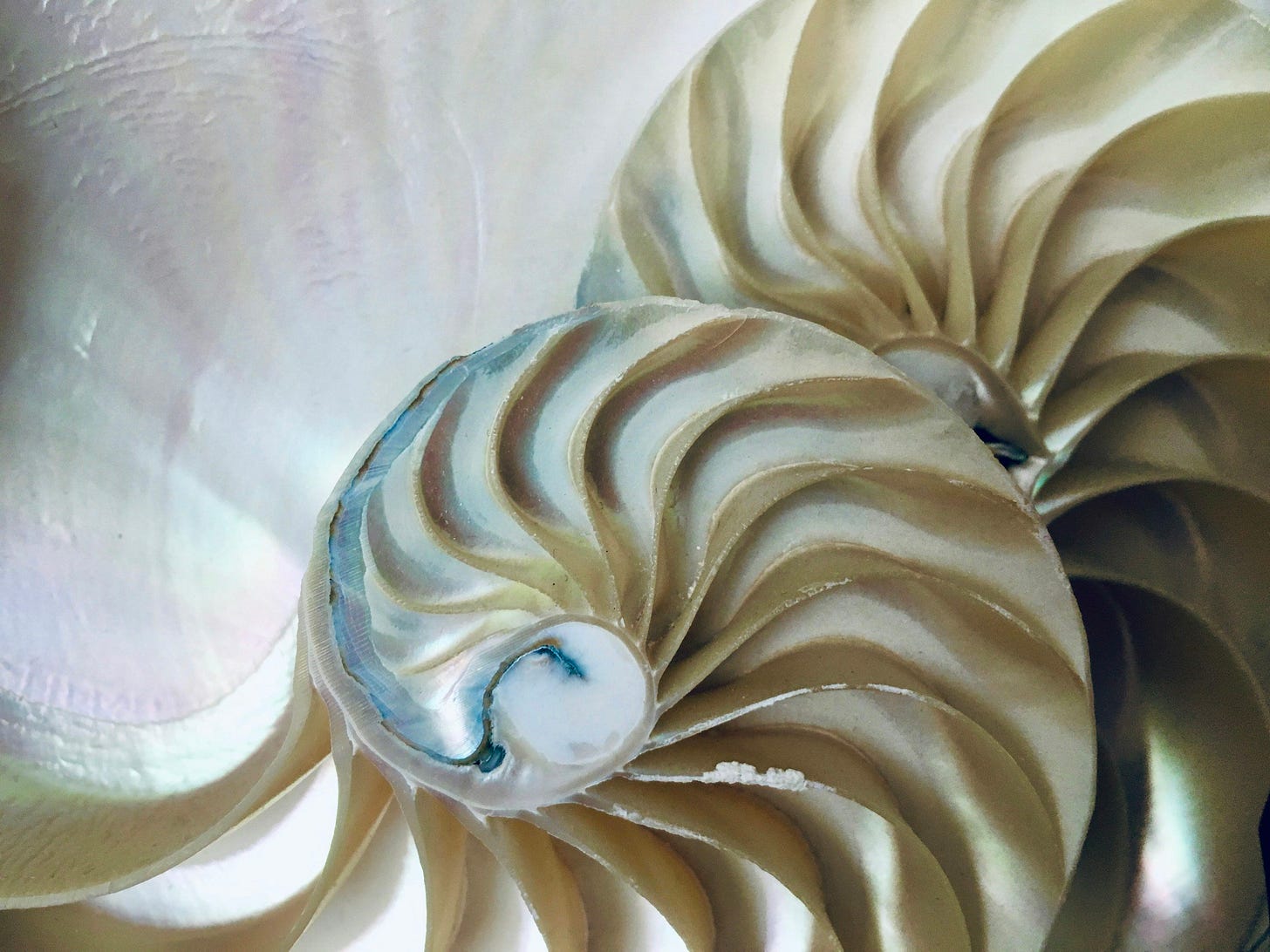
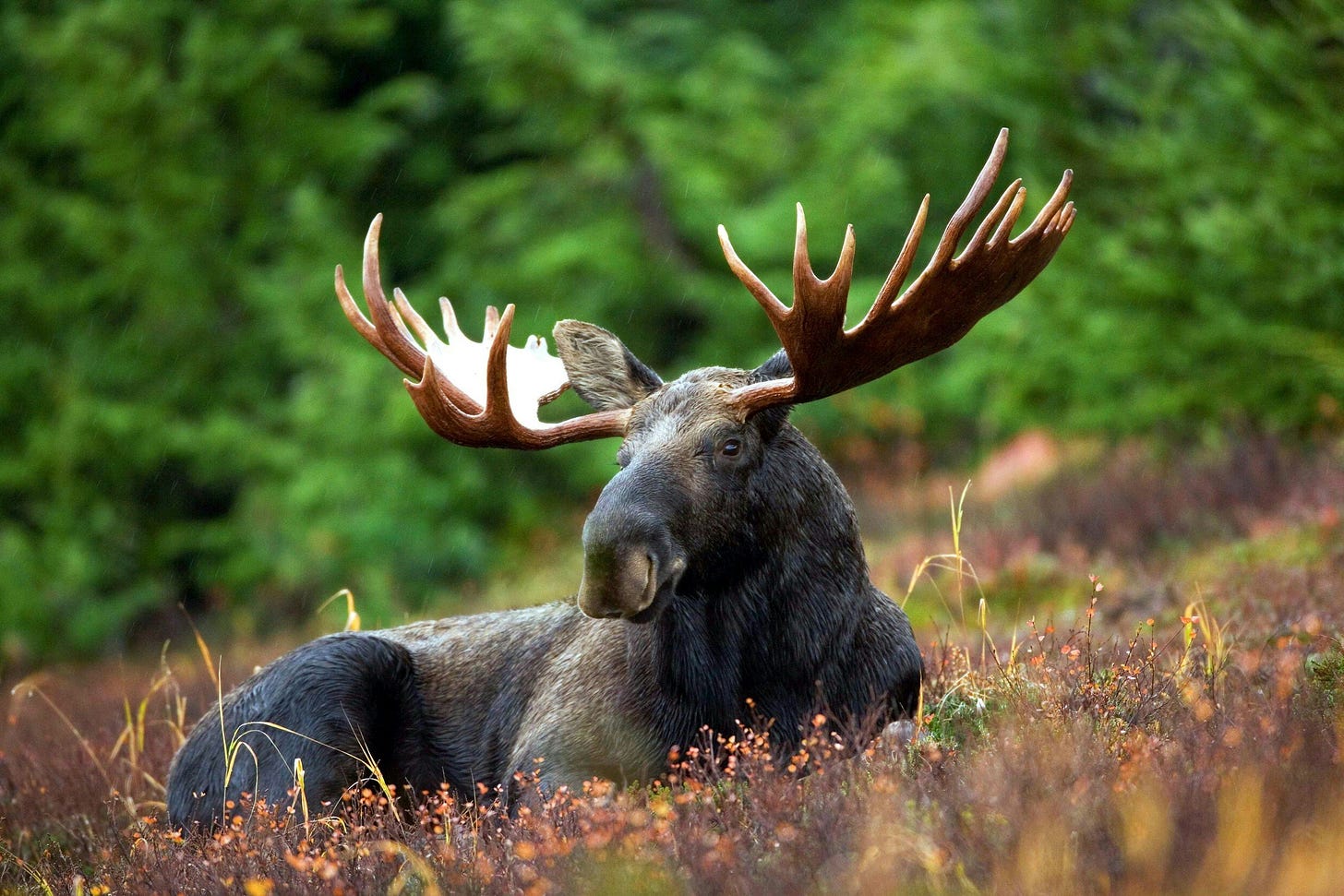




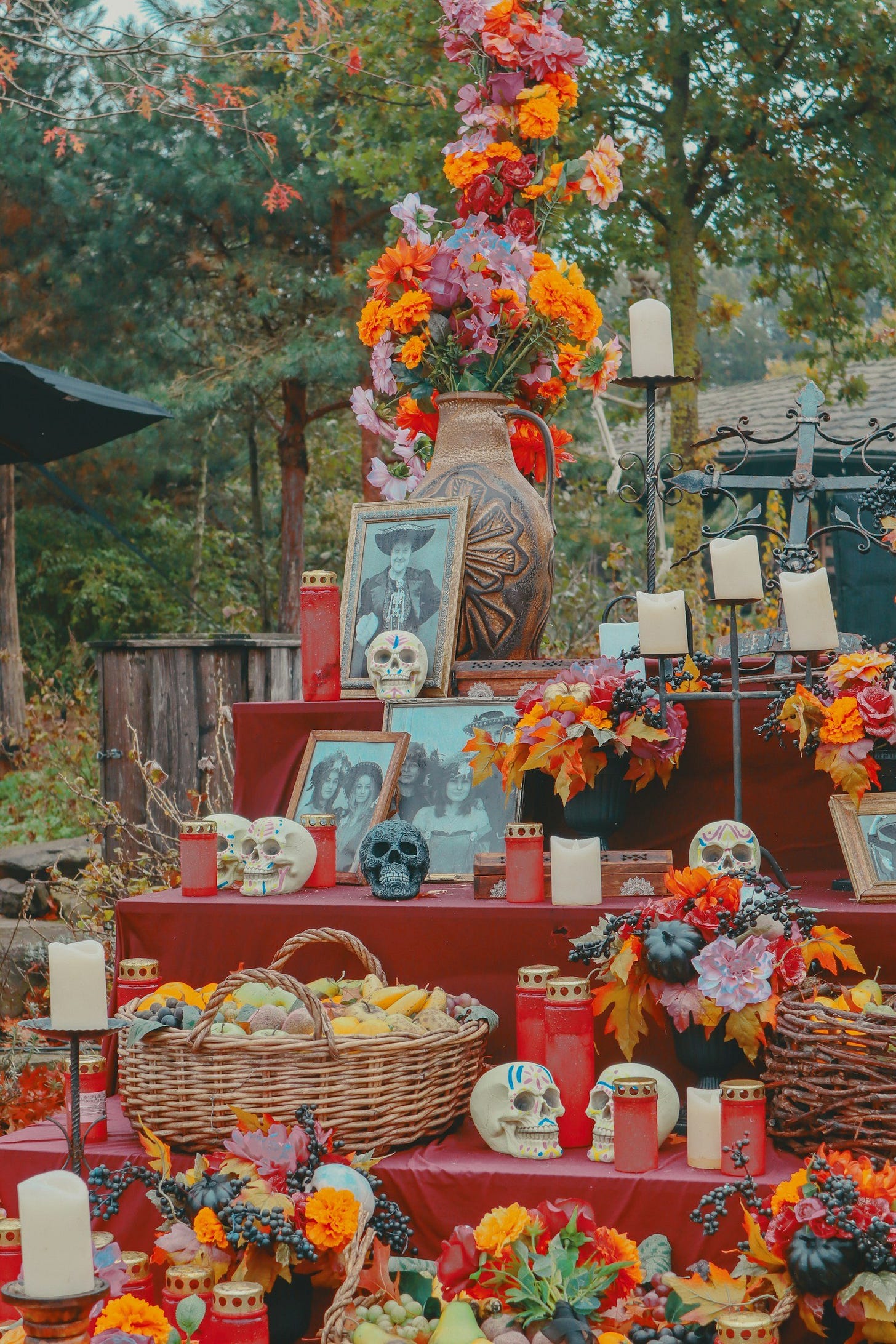

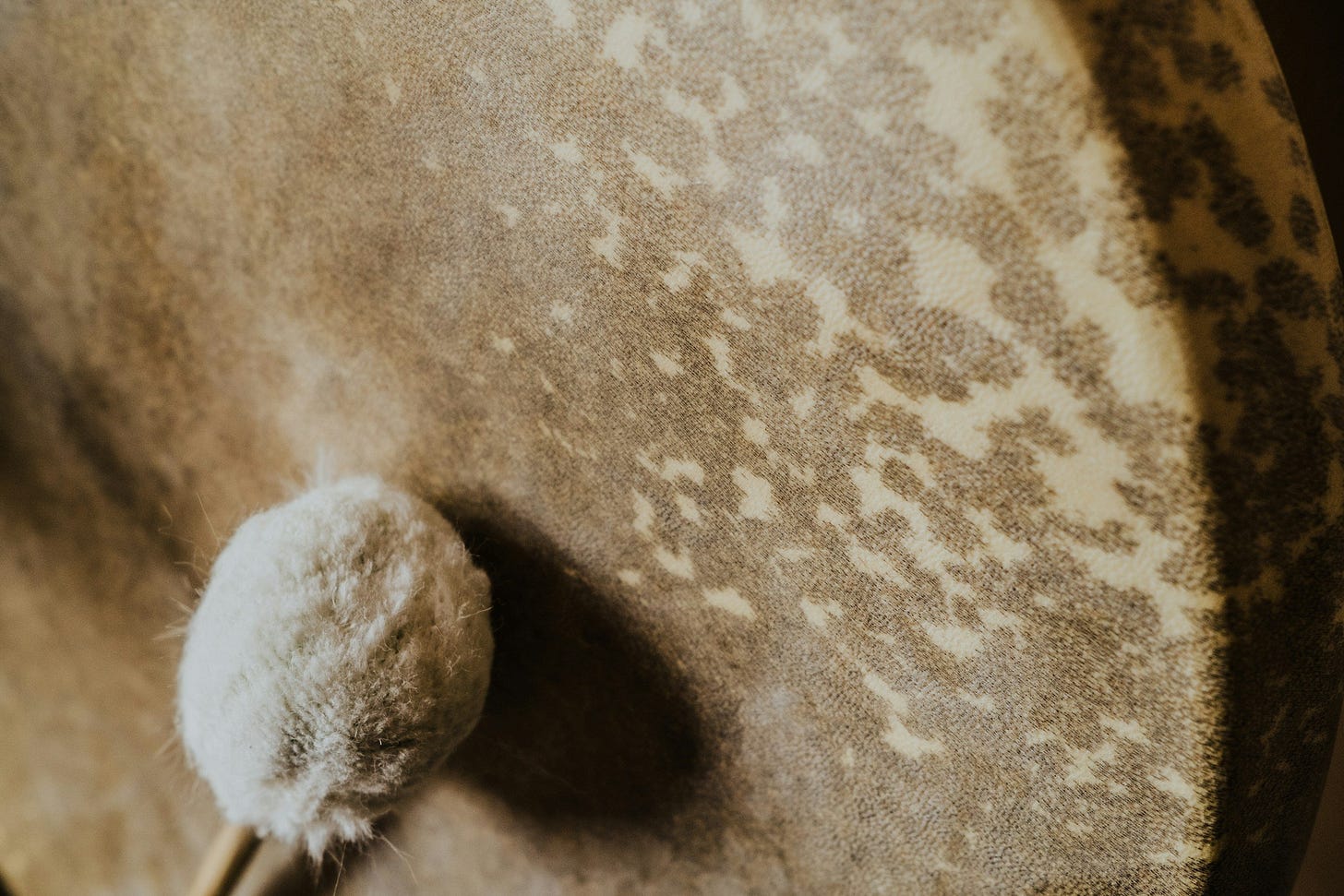

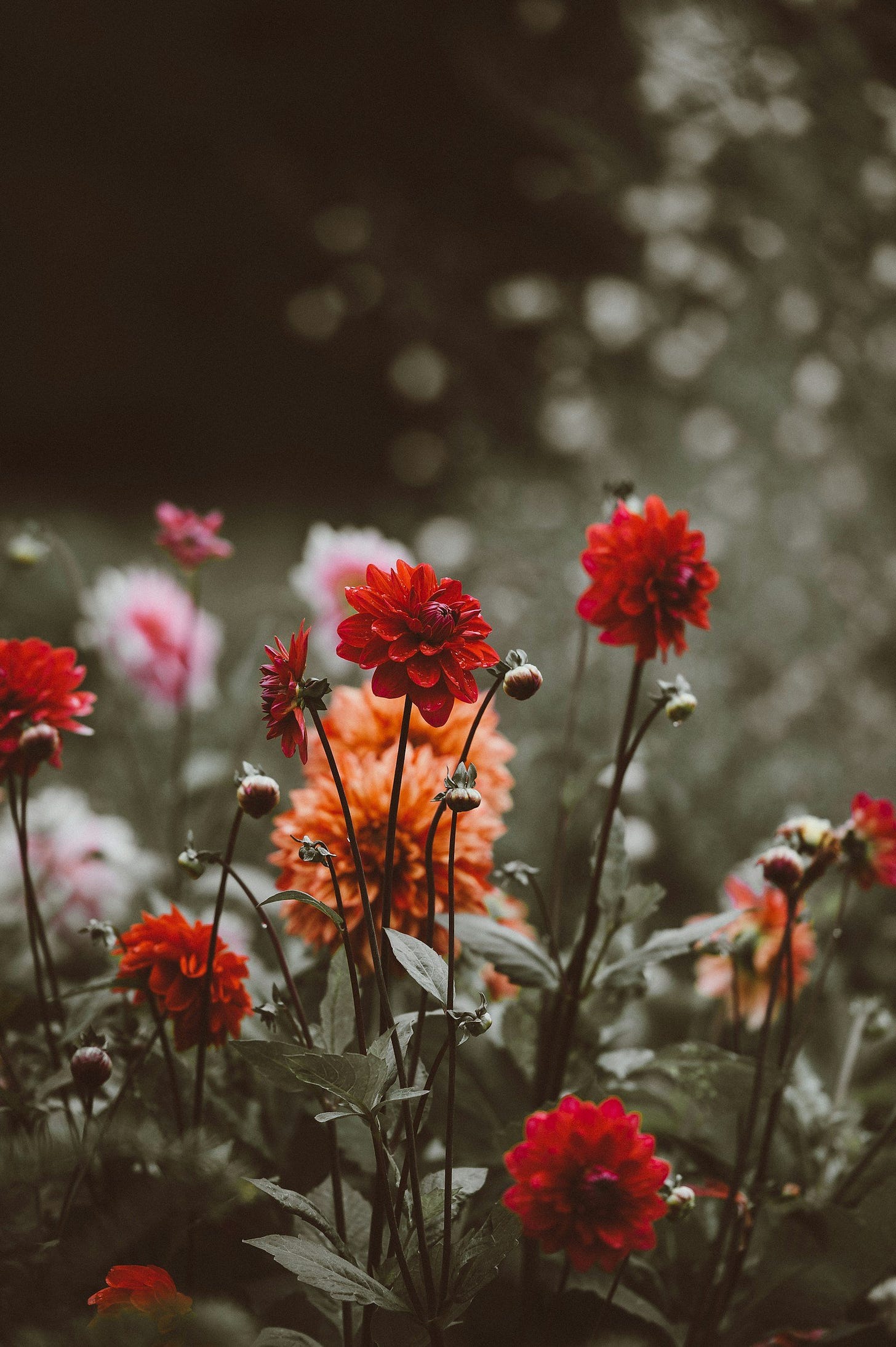

Juniper, I love your deep delve into all things shamanic here. It is both familiar and unknown to me. I put a huge amount of trust and faith in my guides and I and deeply honour and respect this practice. I I have been given permission to use it as part of my healing by my guides, and do my own journeying. It's something that I do find it is one of the practices I am most connected to.
It takes such time and devotion to lay this all out, and it is so important. I appreciate you greatly for doing it, especially as a fellow practitioner. Much love.